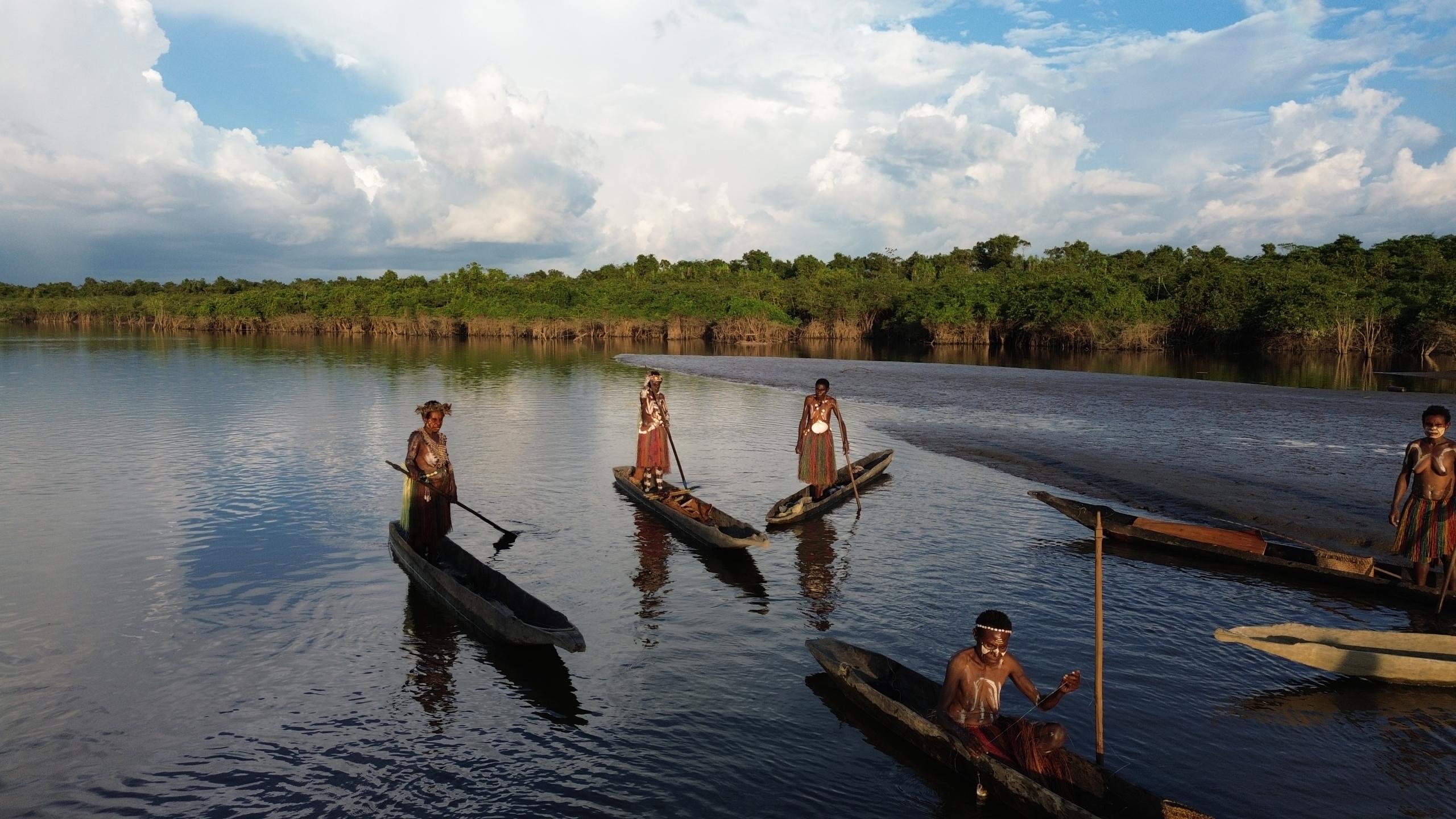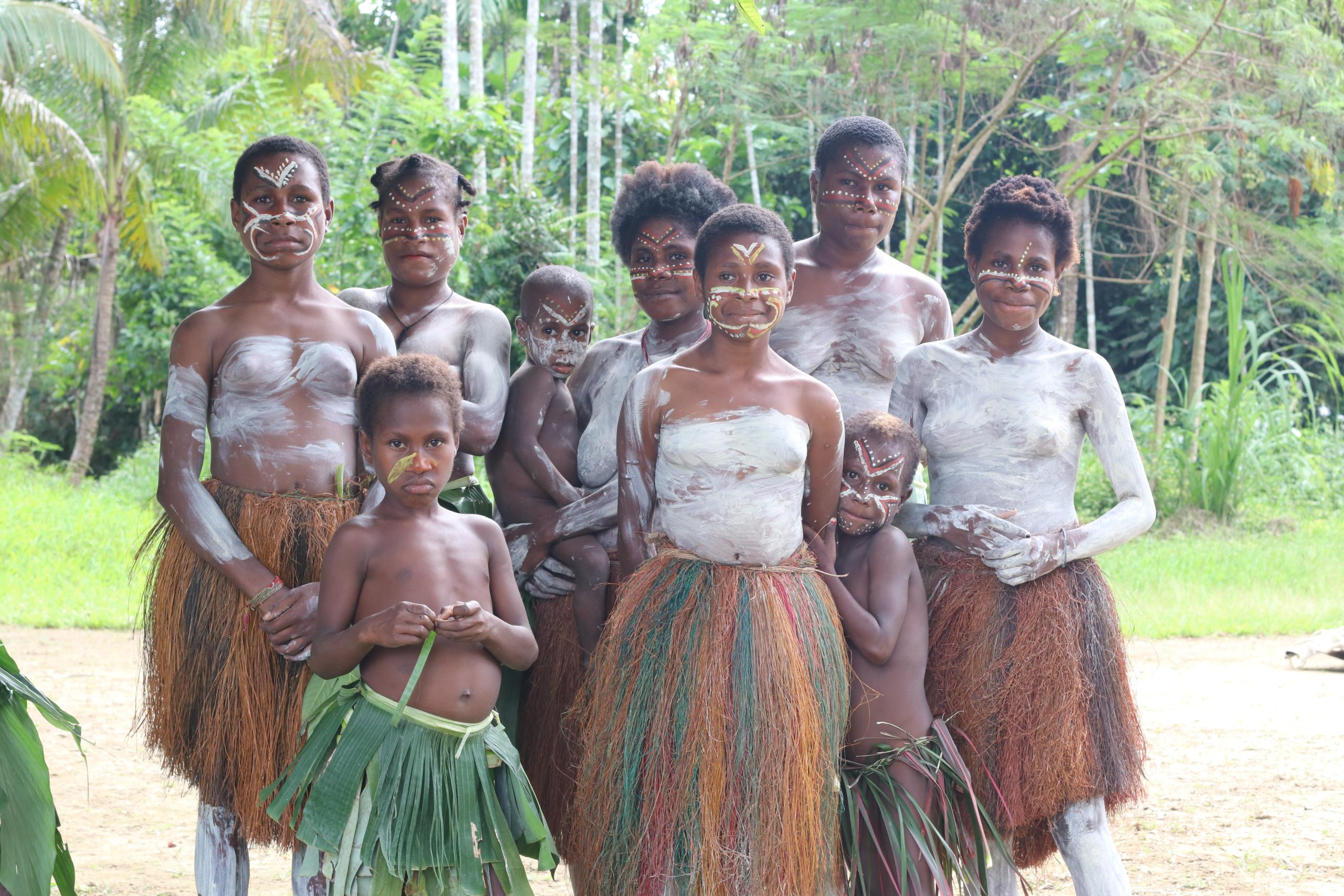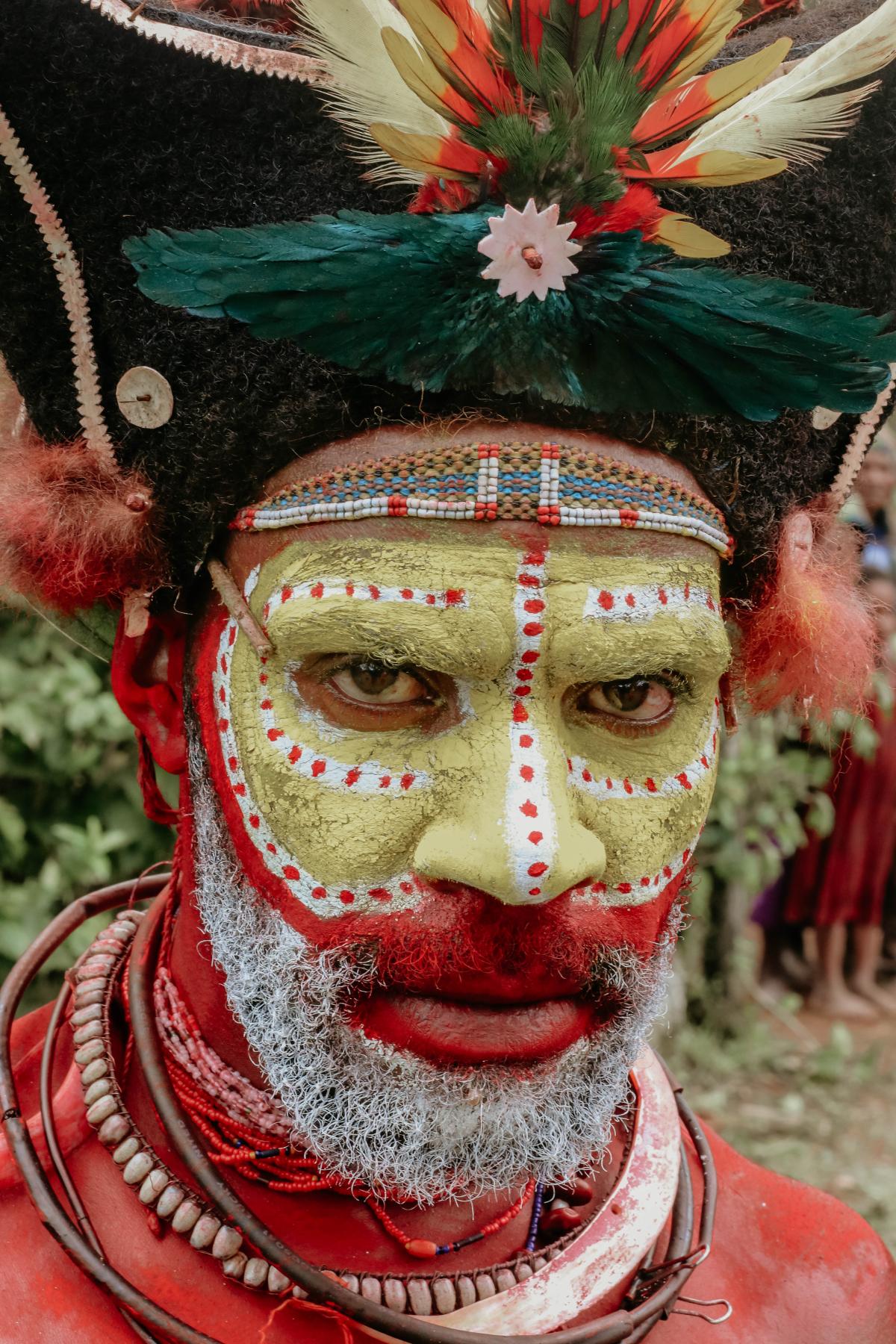The Karawari people of Papua New Guinea
According to Nancy Sullivan, the region south of the Sepik River is characterised by extensive alluvial floodplains crisscrossed by narrow waterways and bordered by low hills that rise towards the Central Range. This area includes three principal tributary systems: the Karawari, Blackwater, and Chambri Lakes. The communities living on these floodplains share significant ecological and cultural traits, many believed to have originated from the hills behind the Blackwater and Karawari rivers. Historically, these groups lived semi-nomadically, engaging in hunting, foraging, and fishing, while defending themselves against neighbouring headhunters.

Karawari Villagers
Among these groups, the Karawari people are the most isolated. Many of their villages are relatively new, including Awim, established in 1996. While the area was first surveyed by the Taylor-Black Hagen-Sepik patrol in 1939, it remained largely unexplored by outsiders until the 1960s.
The Karawari’s haus tambarans, or men’s houses, are notable for their striking sago bark paintings, which depict clan stories and serve as educational tools for young initiates. Rituals involving skin cutting mark a transition for boys and girls into their father’s clan, representing important rites of passage. Historical practices, including headhunting, have shaped the region, with caves once used for storing trophies now serving as rest stops during hunting expeditions.

Karawari people Papua New Guinea
Within the haus tambarans, the iconic cult hooks, known as kamanggabi, symbolise protective ancestors. In times of conflict or crisis, men conduct elaborate divination ceremonies using the kamanggabi to guide decisions on activities such as raids or community relocations. When a community moves, they carry the spirit of the kamanggabi to its new home, creating a newly carved representation to preserve its cultural and spiritual significance.


